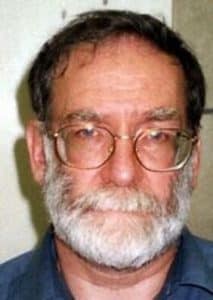Cold, cunning, and heartless. All words used to describe those who can take a life with no remorse. Typically, when the topic of prolific serial killers comes up, we tend to think of the big names such as Ted Bundy, John Wayne Gacy, and the Zodiac Killer. Unfortunately, some individuals have unleashed more bloodshed than they have. Three of these heinous individuals include Pedro Lopez, Dr. Harold Shipman, and Javed Iqbal.
Pedro Lopez, “The Monster of the Andes”.
As with many serial killers, Pedro’s early life was not for the faint of heart. Pedro’s mother ruled her thirteen-child household with a violent iron fist. She was also a prostitute who would be physically and sexually abused in front of her children. Perhaps being subject to his mother’s abuse changed something in him and led to him getting kicked out of his house after being caught sexually assaulting his younger sister.
Now, an eight-year-old child of the streets, Pedro, was subject to even more atrocities. As a hungry child in need of sustenance and safety, it only made sense to accept the offer of food and a bed from anyone who offered. Alas, this was not what happened. The man who extended the offer repeatedly molested the young boy in an abandoned building. After intense trauma, such as what this young boy went through, some individuals may experience post-traumatic growth, where they become better individuals despite what they have gone through. This would not be the case for Pedro Lopez.
His first murder(s) happened following an arrest in 1966 after being caught stealing cars to make a living. Pedro was subject to a gang rape in prison and subsequently killed his attackers thereafter. Reports differ on whether or not the killer received additional jail time as a result. Once he was let out of prison three years later, his reign of terror would officially begin.
Between Colombia, Ecuador, and Peru, Pedro Lopez would hunt, stalk, sexually assault, and then kill his extremely young victims. The poor girls tended to be only 9-12, almost the same ages as when The Monster of the Andes was also sexually abused. Eventually, the killer was caught by the Ayachucos tribe following an attempted abduction of a nine-year-old girl. The tribe almost successfully killed the killer by burying him alive and planning to have his face eaten by ants. However, a Christian missionary somehow convinced the Ayachuco people to turn him over to Peruvian authorities, who deported him back to Colombia.
Since he wasn’t incarcerated following his deportation, Pedro once again continued his twisted game of raping and killing innocent young girls. This behavior was allowed to continue for over a decade before the killer was apprehended while attempting to lure a market vendor’s daughter. Hereinafter his arrest, Lopez outright refused to confess to any of his crimes, which prompted the authorities to have Pastor Cordova go undercover and try to gain Lopez’s trust. Believing Cordova to be an ally, Lopez began explicitly detailing his crimes. Pedro Lopez was subsequently charged with 57 murders, but admitted to at least 110.
Due to Ecuadorian laws, Pedro Lopez was sentenced to a maximum of only twenty years. The highly prolific serial killer only served sixteen of those before he was released back into society. This decision was not met with much support, as many of the parents in his previous hunting grounds demanded he be recaptured. Despite this, he was allowed to remain a free man, where he thereafter disappeared and hasn’t been found since.
Dr. Harold Shipman, a Man Who Broke His Oath

Harold had a seemingly normal upbringing in the UK, even being quite popular with his mother, who later died of terminal lung cancer. During her final days, Shipman appeared to develop a fascination for the drugs, specifically morphine, that were relieving his dying mother’s pain. Following this, Harold began on his path of learning how to become a doctor. A job meant to help people, going as far as making each doctor swear an oath to “do no harm“. Lamentably, Harold would go on to severely violate the Hippocratic Oath.
The doctor’s first offense was not that of murder, but instead drugs. He had a particular affinity for an opiate called Pethidine. The drug had similar effects to morphine, though it is now much less commonly used as it has a whole host of undesirable side effects. A few include high rates of addiction and neurological issues. Even though he was fired for this issue, it wasn’t long before another clinic picked him up and allowed Shipman to begin killing.
Shipman practiced “medicine” for over two decades, during which he aroused minimal suspicion. Despite concerns being raised by the coroner and a colleague, the case was initially laid to rest as the killer’s records appeared to be legitimate. Due to a subpar effort and lack of investigation by law enforcement, Harold was cleared of all charges. A later investigation revealed that the family practitioner had forged those documents for his victims to appear to have died from natural causes.
Shipman’s fatal mistake came when a wealthy patient added Shipman to her will. Not only was this sudden addition concerning, but it was coupled with the fact that the victim, Kathleen Grundy, had been notably healthy in the days leading up to her abrupt “death”. The results of an intense investigation revealed that not only had he forged Kathleen’s will, but he had killed her as well. This prompted police to look into Shipman’s other deceased patients. After performing exhumations and autopsies on non-cremated patients, it was revealed that many of them had been killed by a lethal dose of morphine and that their medical records had been altered to offset suspicion.
All in all, it was estimated that the doctor had killed at least 250 patients during his reign of silent terror. A question that plagued the public’s mind was “why?” Although it was confirmed that it might have partially been a reason for ending Kathleen’s life prematurely, this was likely not a motive for any of his other victims. One theory suggests that Harold enjoyed the power that came with the ability to end one’s life, as most of his former patients were too healthy for euthanasia to be a valid hypothesis. Unfortunately, these questions will likely remain unanswered since Harold maintained his innocence up until the day he killed himself while serving his substantial prison sentences.
Javed Iqbal, a Predator of the Poor and Young
While any serial killer’s reasoning is impossible to understand, Iqbal’s may be one of the most difficult. This is simply because, even from an early age, Javed exhibited unusual behaviors. “It was like some spirit had possessed him. I think he was possessed as a kid.” Claimed his brother Ziaul Haq in an article by trtWorld. It was later discovered that Javed was homosexual, an identity that was widely unaccepted during his childhood. Instead of being in a normal, healthy relationship with an adult man, Javed wickedly preyed on underage boys.
Javed didn’t start as a murderer, instead, he solicited pictures of pre-teen boys via a magazine pen-pal system. They would often be drawn in by the promise of rewards such as a sum of money. If he were openly advertising his perverted desires, wouldn’t he immediately get caught? Yes, many parents of predated children spoke with Iqbal’s family to no avail. A sodomy charge arose after the heartbreaking rape of a nine-year-old boy but Iqbal’s family enabled the behavior by paying off the police. The crime isolated Iqbal from his brothers, prompting them to go their separate ways with a substantial amount of inheritance.
Iqbal’s newfound wealth allowed him to open a metalwork shop, and later an arcade. Most of the employees/patrons tended to be the same age as his victims. When new allegations would arise over the years, Javed would simply pay off officials, never facing any kind of punishment for his despicable actions, which had yet to include murder. The serial killer’s rampage began following a severe beating and the death of his mother.
Over six months, Javed began brutally killing any male child he could get his hands on with help from the young metal shop employees. He even kept meticulous, detailed journals about every boy. As the months continued, suspicion arose until public pressure forced law enforcement to take the matter more seriously. Javed managed to successfully evade capture for close to a month before he curiously turned himself in. The man, in his late thirties, began boasting about how he killed 100 boys, an unusual attitude which he maintained during his month-long trial, but swiftly went back on his admission of guilt.
Due to the overwhelming evidence against him, which included over 100 witnesses, Javed Iqbal was found guilty and sentenced to death. Javed and his accomplice were supposed to be hanged, cut, and dissolved in acid in front of the victims’ families. While the method of execution may seem unusual, it appeared to be an act of revenge as Javed typically dissolved his victims in acid. To the disappointment of all of the families involved, this punishment never came to fruition as the men hanged themselves while in prison.
Final Thoughts
In conclusion, while rare, serial killers leave lasting fear in the public’s eye due to the extreme and brutal nature of their crimes. Not only does it create an even greater fear of strangers, but it may also influence a distrust of unsuspecting individuals, as with the case of Dr. Shipman. Fear not, while the publication of serial killers may be extremely large, their numbers are considerably low. Despite this, it is always a good idea to stay safe by minimizing risk factors and traveling in trusted groups as often as possible.









